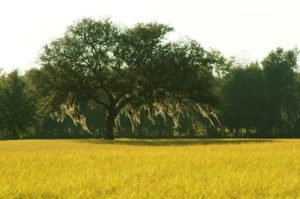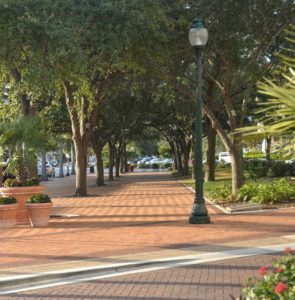 I first fell in love with trees when I was 8 years old. The house we’d moved to had a huge Ficus benjamina tree with a 40-foot wide canopy in our backyard. It gave such deep shade that sitting underneath it on a hot afternoon, you would feel like you were inside a cave. It was my haven during the lazy days of summer.
I first fell in love with trees when I was 8 years old. The house we’d moved to had a huge Ficus benjamina tree with a 40-foot wide canopy in our backyard. It gave such deep shade that sitting underneath it on a hot afternoon, you would feel like you were inside a cave. It was my haven during the lazy days of summer.
And it turns out that as a lover of trees, I’m in great company. In 1852, J. Sterling Morton bemoaned Nebraska’s dearth of trees when he moved there from Detroit, and he made it his mission to plant one million trees. Because of his efforts, in 1885, Nebraska declared April 22, J. Sterling Morton’s birthday, as “Arbor Day.” The Arbor Day Foundation© has made it their mission to keep Morton’s efforts alive by promoting annual nationwide Arbor Day events in April.
 Tree Assets
Tree Assets
If you’re like me, then there’s a tree (or two) in your neighborhood that whenever you walk or drive by, it gives you a sense of grounding – connectivity to the natural rhythm of life. That’s just one of the ecosystem service benefits we get from trees. Ecosystem services are those life-sustaining benefits which humans acquire from nature. Trees provide the following ecosystem services:
- cleaner air – Research shows that trees contribute to cleaner air in our communities by reducing air pollutants such as carbon dioxide, ozone, particulate matter, sulfur dioxide, nitrogen dioxide, carbon monoxide and lead. Many neighborhoods located close to highways, and factories associated with particulate matter emissions, rely on trees to act as natural air filters
- storm water filtration & flood mitigation – Because of their extensive canopies and root systems, mature trees intercept hundreds of gallons of rainfall per year and increase soil’s rainfall absorption rate. Both these ecosystem services result in decreasing stormwater pollutants and stormwater runoff volumes. This protects water quality and can decrease the potential for flooding in many neighborhoods.
- heat-wave temperature moderation – Human activities in urban and suburban areas can lead to a phenomenon known as an urban heat island (UHI), where these developed areas often are significantly warmer than surrounding natural areas. The UHI can be so marked, in fact, that developed areas might be as much as 10 degrees hotter than natural areas. This phenomenon traces its roots back to at least 1810, when Luke Howard, a British chemist, observed a temperature difference between London and nearby natural/rural areas. He attributed this to the fact that natural and rural areas cooled off faster than urban areas, due to the tendency for urban environments to retain heat in buildings, pavements, and roads.Howard’s observations, coupled with continuing research since, have been used to support the temperature moderation benefits of re-introducing trees and other plants to yards, roadways, and even rooftops (known as “green roofs”) in urban areas.
- wellness and mindfulness benefits – In addition to helping neighborhood residents feel cooler, trees also help people to “keep their cool.” Research points to the positive effect of trees and green spaces on stress reduction, lower blood pressure levels and people’s ability to cope with ADHD. Although there are different theories on why trees positively impact people’s mental health and wellness, there is overwhelming evidence that the presence of trees and associated green space significantly reduces stress.
- increased property values – Studies indicate that the presence of trees significantly increases property values. Specifically, a study published in Urban Forestry & Urban Greening indicated that trees within 500 feet of an appraised property increase its sales price by at least 1 percentage point. Depending on the sale price, this can mean a difference of several thousand dollars.
 Treejuvenate Yourself
Treejuvenate Yourself
In many ways, then, trees are the guardians of our “galaxy.” They provide or protect many of the quality-of-life measures we value. So, where an old maxim advises us to “stop and smell the roses,” I’ll add to that: take pause to appreciate all the benefits of your community tree assets.
And as a nod to Marvel© fans everywhere, although Groot was the last surviving member of his tree-clan, humans still have many, many trees to thank for being our neighborhood guardians.
 0
0
 Treejuvenate Yourself
Treejuvenate Yourself